Media | Articles
Vellum Venom: A glossary of automotive design terms
This series has always been about elevating discussions about car design for all, specifically in a space more public than most car design websites. Along the way I’ve used words that aren’t exactly common knowledge, and I’ve even made my own two-word phrase that encapsulates an otherwise complicated design disappointment. I do my best to avoid car-design jargon, but that only goes so far. Clearly, the time has come to create a glossary of terms used here in the Vellum Venom column.
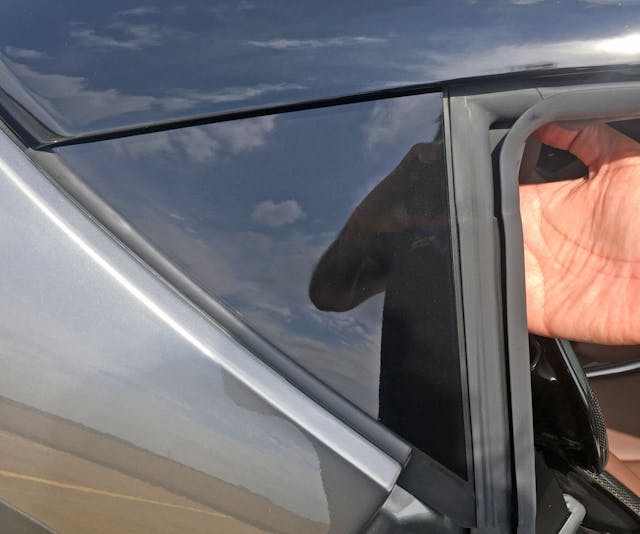
A
A-line: The line that creates the top half of a vehicle’s silhouette, regularly seen in “teaser” photos released by OEMs looking for a little promotion of a future product.
A-pillar: When looking at a side view, the first roof pillar that helps frame the windshield. More info here.
Accommodation curve: When looking into an interior from the side, the arc in a seat’s back that ensures a comfortable distance between the chair and the pedals as the occupant moves the seat moves up or down.
Aerodynamics: The study of how air moves and influences a car’s performance, as a whole or at the component level.
Marketplace
Buy and sell classics with confidence

Air curtains: Aerodynamic trick to reduce drag by directing air around the front wheels, often providing a marginal benefit to fuel economy.
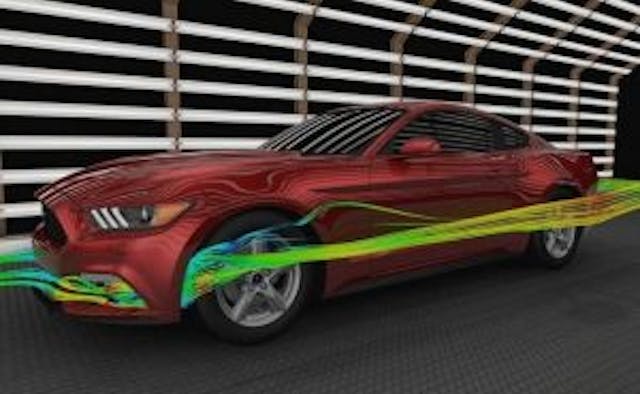
Air dam: A flat panel added to the bottom of car’s front end to aid fuel economy and engine cooling.
Air extractor: A hole in the body that relieves pressure from the engine, passenger, or cargo compartments. They can be on the hood, fender, quarter panel, and internal structure (like those trunk flaps behind bumpers).
Air foil: The cross-sectional shape of a wing.
Aperture: An opening on a vehicle’s body. May be as small as a cooling duct or as big as the holes covered by doors/deck lid/hood.
Approach angle: The maximum angle a vehicle can climb without damaging the front bumper or front suspension.
Art and Science: Marketing term for Cadillac’s angular design language, first seen on the 2002 CTS sedan.
Art Deco: A style of visual arts originating in France in the early 1900s that influenced cars like the Talbot-Lago.
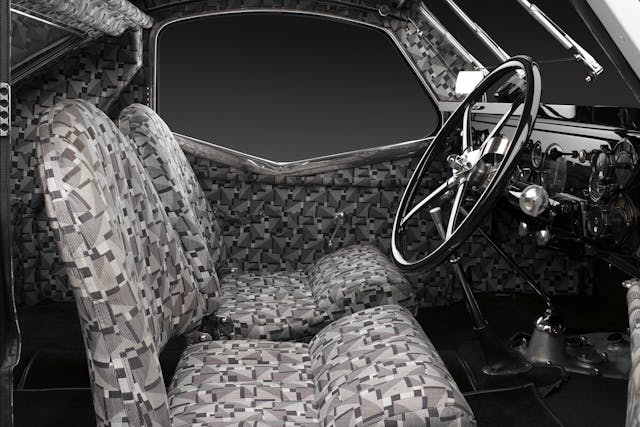
Asymmetry: A lack of a mirror image when examining the front or rear of a design from its centerline. See Land Rover Discovery.
Axle: A line that starts from a wheel’s centerline and runs “through” the vehicle to the wheel on the opposite side.
B
B-pillar: The second pillar of a roof, when moving backward from a vehicle’s nose, after the A-pillar.
Badge: An identifying trim piece used to promote a vehicle’s make, model, or trim level.
Badge Engineering: A vehicle created from another template, but executed so poorly as to bring scorn upon itself for its lack of uniqueness.

Baroque: A 17th century art movement characterized by ornate and excessive ornamentation. Used to describe design elements of luxury cars from multiple time periods.
Bauhaus: A German arts and crafts school founded in 1919 by Walter Gropius, famous for concepts that became the foundation for Industrial Design.
Belt line: A horizontal line that separates a vehicle’s lower body from the side windows (see greenhouse).
Benchmarking: Line drawings of a concept placed over a vehicle chosen to be the concept’s template for size and proportion.
Bevel: A hard-angled cut that adds slope to a component. See 1980s Lincoln Town Car.
Boat tail: rear end designs created to evoke the style of a boat’s stern. Examples include the fantail design of the Rolls Royce Boat Tail or the pointed transom of a 1971 Buick Riviera.
Brand character (DNA): The visual building blocks of a design that signify a unique automotive brand. (See Hofmeister Kink.)
Brougham: body style with a roofless driver’s compartment, dating back to the horse carriage days. Cars of the malaise era turned the configuration into an upscale trim level for sedans by adding neoclassic items like landau tops, coach lights, and rococo ornamentation.
Brutalism: A minimalist post war architectural style dominated by the unfettered shapes made possible by formed concrete construction, often referenced with 1970s wedge design in automobiles and retro 8-bit Minecraft design.

Bumper: a horizontal crash structure mounted at each end of a vehicle, often covered by an aerodynamic/stylized plastic cover since the advent of plastic technology mid-1980s.

Bumper shelf: A bumper design that creates a horizontal shelf sticking out from the rest of the body. The shelf often extends around the sides, on vehicles focusing on practicality and durability.
Buttress: A solid panel that supports another design element, for visual or structural purposes (or both). See the Jaguar XJS.C
C-pillar: The third roof pillar, and the final one for conventional sedan and coupe body configurations. Learn more here.

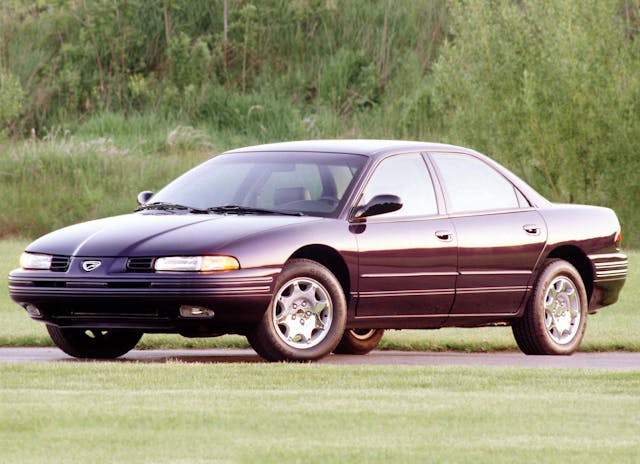
Cant rail: The portion of the roof that connects the A, B, C, and D pillars (when applicable) to each other.
Catwalk: see shoulder line.
Centerline: A line that runs through the center of something, used as an aid to create a symmetric design at the front or back of a vehicle.
Center of gravity: The point in space where all of the vehicle’s mass is located from a theoretical standpoint. (Thank you Don Sherman!)
Chamfer: A bevel designed to connect two disparate surfaces.
Character line: A line stamped into a panel to add visual interest or improve structural rigidity (or both).
Cheater panel: an opaque panel used to implement DLO FAIL.
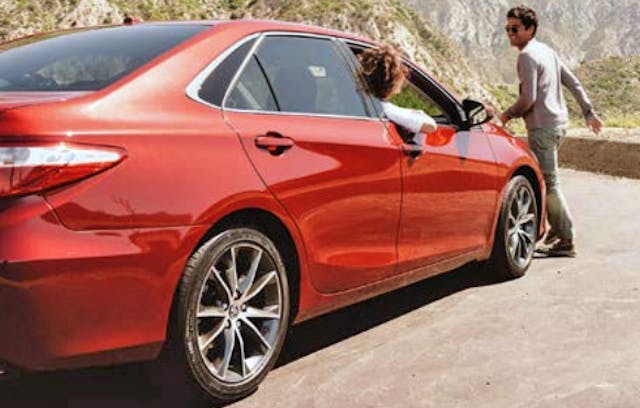
Coach light: Ornamental light normally placed on the B- or C-pillars of a roof.
Color gradient: A set of colors arranged in a specific order of progression, usually pertaining to external graphics or interior materials.
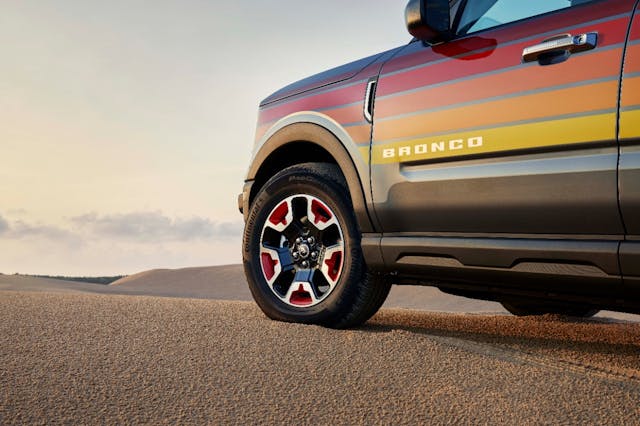
Core Support: structural assembly behind the header panel, primarily used to house the radiator and to connect the two fenders together.
Cornering light: lighting system to aid in turning, illuminating when the turn signal is activated (generally old cars) or with input from the steering sensor (generally newer cars).
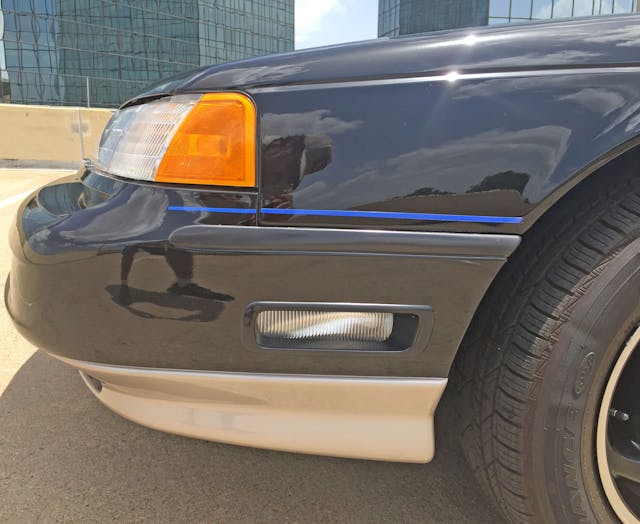
Coupe SUV: a two or three-box design sport utility vehicle with an aggressively sloped D-pillar, pioneered by 2008 BMW X6 Sports Activity Coupe.
Cowl: The base of the windshield, and a flashpoint of significant cost and functionality for modern car design. Crown: The highest part of a design element, most obviously seen in the Continental kit of a stamped decklid.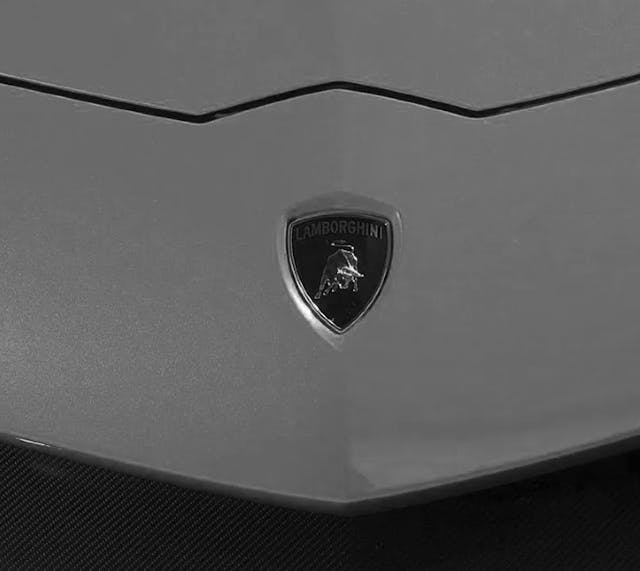
D
DLO FAIL: A lament for the proliferation of opaque plastic panels in lieu of glass, visually cheating the shape of a vehicle’s greenhouse. More info here.
DNA: see brand character.
Dagmar: a front bumper design from the 1950s with two bullet shaped appendages, crudely named after a female TV personality of the era.
Dash-to-axle [ratio]: The distance between the centerline of the front wheel and the bottom of the windshield. More info here.
Dashboard: Originally defined as the lower part of the firewall (see Curved Dash Olds) but is now vernacular for the instrument panel in a vehicle’s cabin.
Daylight Opening (DLO): The glass area of a vehicle’s greenhouse as seen from the side. More info here.
Daytime Running Lights: low intensity, front-mounted lights that increase visibility during the day, when the headlights aren’t needed. Originated in Nordic countries where ambient light is less intense, and snow can mask the presence of oncoming traffic.
Dead Cat Hole: A morbid reference to a suspension’s jounce room, and the space between the top of a car’s tire and the wheel arch. American cars were previously known for significantly taller spaces to aid in snow chain installation, also making it easier for cats to seek shelter in the winter.
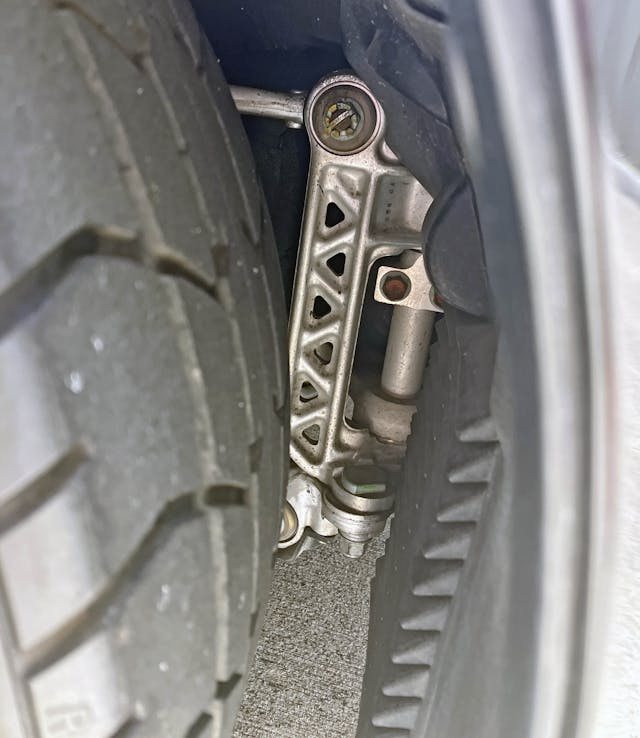
Deflector: See fairing.
Departure angle: The maximum angle a vehicle can descend without damaging the rear bumper or exhaust.
Design study: a concept rendering or 3-D model (or full scale concept car) meant as research to answer a particular question. Can be for cosmetic, branding, or functional reasons. See the Mercedes-Benz ESF 05 safety vehicle.

Dog’s eye view: Photography term used to show what a vehicle looks like from a low vantage point.
Down-the-road Graphic (DRG): Recognizable front-end styling, intended to help market/promote a vehicle’s brand via visual recognition. Ex. BMW’s kidney grilles.
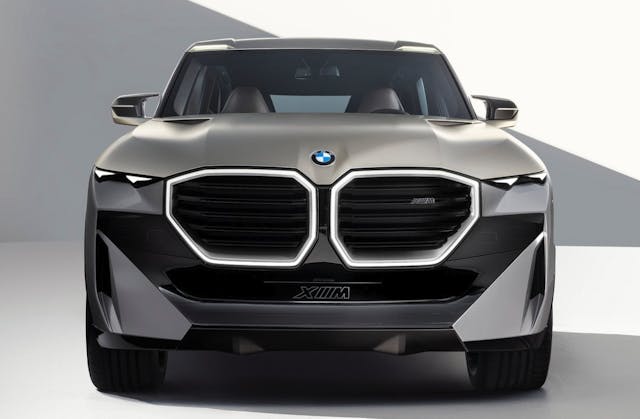
Diffuser: An aerodynamic panel at the bottom rear of a vehicle, designed to draw air out of from underneath to increase downforce.
Drag: The force of air pushing against a vehicle at speed. NASA calculates this by taking the “drag coefficient times the density (of the air), times half of the velocity squared, times the reference area (frontal area).”
Drag coefficient: A unitless number calculated to determine the resistance of a vehicle at speed. More info here.
Ducktail: A short, upright spoiler popularized by the Porsche 911.

E
8-bit design: Retro design implementing pixels in a style befitting digital creations of the 1980s. See Minecraft video games, and the Hyundai Ioniq 5.
Emblem: see badge.
Easter egg: an element of a vehicle’s brand character that’s hidden in an obscure but not impossible to find place for the end user. Term was popularized by the secret screen found in the Adventure game for the Atari 2600, but automotive Easter eggs go back to the time when a Ford Engineer stamped the word “Hi” into the firewall of the 1965 Ford Galaxie.

Ergonomics: the study of designing a vehicle around the person’s needs to reduce stress, most frequently described in terms of the driver’s access points on an instrument panel.
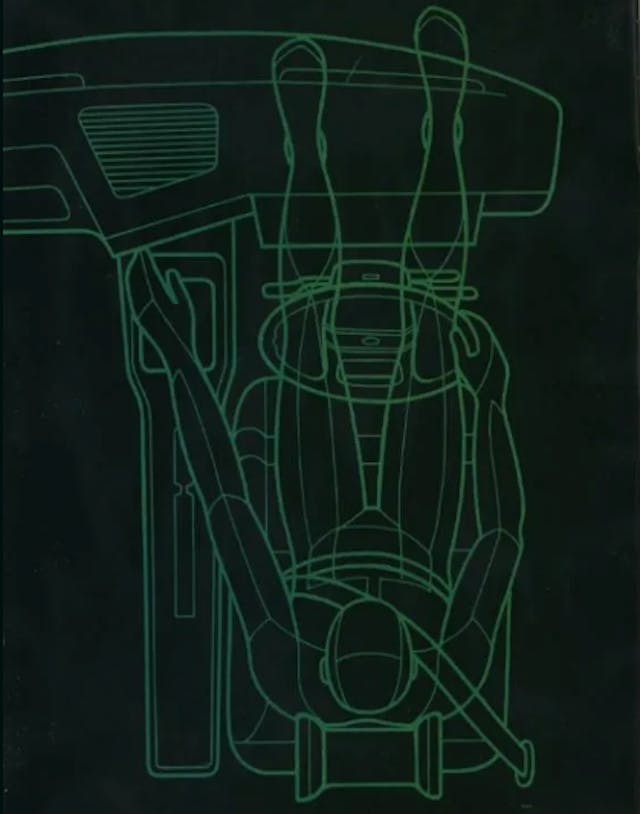
F
Fairing: a part that is added to a vehicle (or a vehicle accessory, like roof racks) to reduce aerodynamic drag or deflect wind.
Facade: architectural term for the face of a building, but can be used to describe customer-facing elements of automobile design.
Fascia: the facade of either the front or rear of a vehicle.
Fast back: an elongated C-pillar that shortens the length of the deck lid relative to other body styles available for the same car. See the 1966 Ford Mustang.
Fender: when viewed from the side, the body panel that normally covers the space between the front bumper and the front door.
Firewall: see bulkhead.
Flash: excess plastic material that forms on the surface of a plastic part. Usually associated with cheaper vehicles where cost cutting is encouraged. Flying Buttress: an angled support beam (not a solid panel), as seen in the Ford GT. Also see Notre-Dame de Paris. Foil: a teardrop shape (usually) attached to a body panel to smooth out airflow, generally seen in or near lighting pods that wrap around a body.Frontal Area: the area inside the shadow that’s made when shining a light at the front of a vehicle.
Frenching: derived from custom car culture, this process integrates a vehicle’s design element within the body, often sinking it into the body as if it was being dropped into a liquid. Most often seen with traditional radio antennas, but applied to any design that emulates this act.
Front Body Hinge Pillar (FBHP): the structural sheetmetal below the A-pillar.
G
Gaping Maw: oversized grilles and cooling ducts that dominate a front fascia. Generally used as a pejorative, as it allows for the addition of non-functional blackout panels popularized by the 2004 Audi A4 and A6.
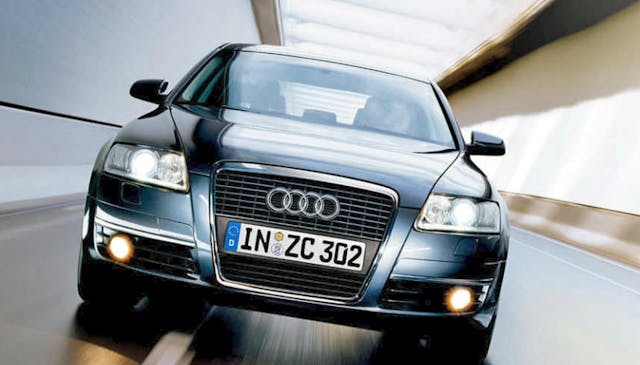
Grille: a protective screen between the outside air and the radiators mounted in the header panel. Can be ornamental to the point of rococo or simply minimalist.
Globalization: in terms of car design, a business concept stressing interchangeability of platforms and parts across the globe. See the Chevrolet Spark ACTIV.
Ground Effects: functional extensions added to the rocker panels to generate downforce via low pressure between the chassis and the ground, often complemented with downforce added by front and rear wings.
H
H-point: the point of a seated human’s hip in car, when viewed at the side of an interior space.
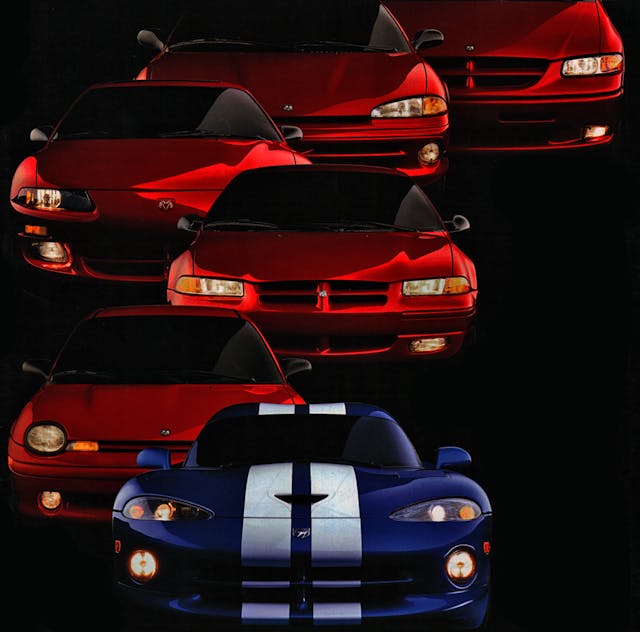

Hard point: location on a body that cannot be changed as per the functional requirements of the vehicle.
Hardtop: a solid roof that’s either removable on a convertible/roadster body (see Mazda Miata), lacks a B-pillar on a fixed roof body style, or folds into cargo area (see Ford Skyliner or Mercedes-Benz SLK).
Hatchback: a two-box design with rear access via a lift-up access door. See the Porsche 928.
Haunches: taken from a four-legged animal’s hindquarters, but translated into the forms of an automobile around the front or rear wheel arches. See three-quarter view.
Header panel: structural assembly mounted above the front bumper, housing the headlights, grille, and often a front fascia.
Heckblende: German word that explains filler panels visually connecting the left and right taillight to make a full-length taillight. Often aftermarket for vintage vehicles, but also see the Porsche Taycan.
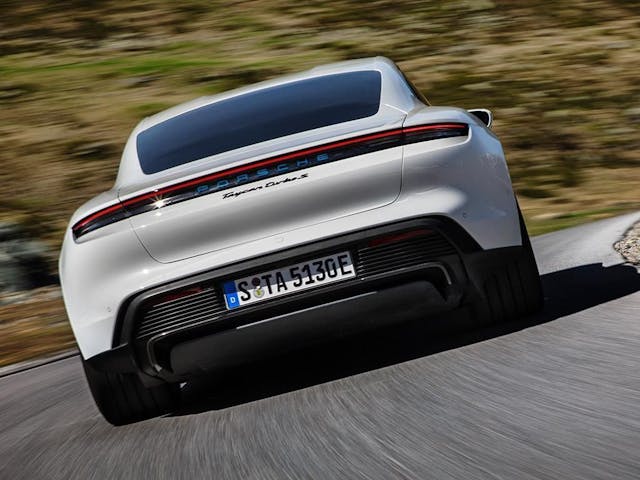
Hockey stick: a unique curve to the quarter window (where it meets the base of the C-pillar) on Saab products.
Hofmeister Kink: a unique bend on a quarter window (where it meets the base of the C-pillar) on BMW products.
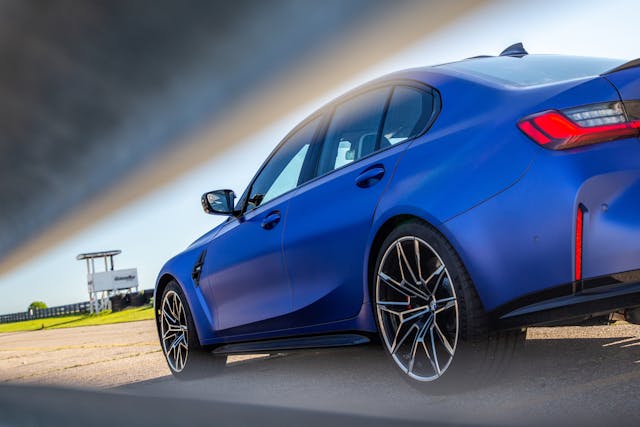
Horizon line: the line that separates the earth from the sky.
Horse Collar: see core support.
I
Impact structure: Crush space needed in a body for safety purposes, often related to front and rear overhangs seen in side view.
Industrial Design (ID): The field of study that centers around designing consumer products on a large scale, a subset of Product Design. Learn more from the IDSA.
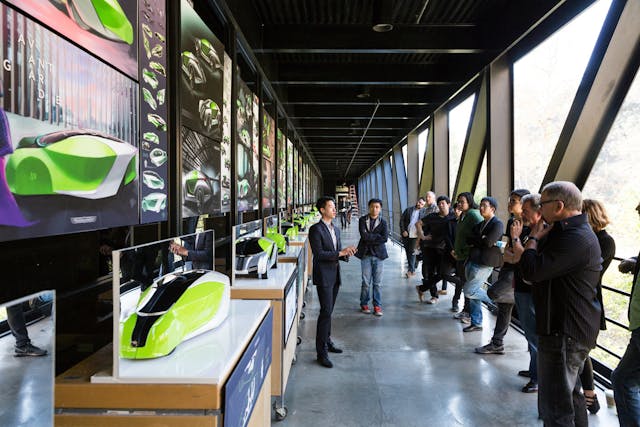
K
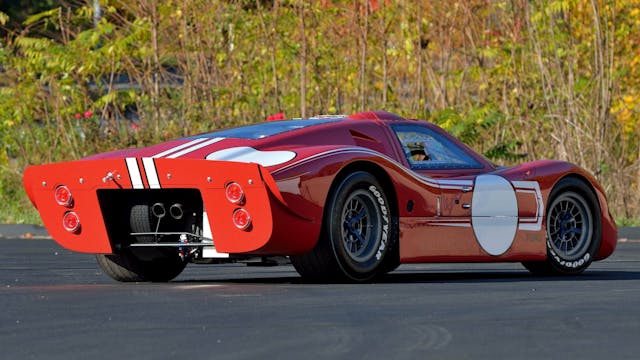
L
Laminar airflow: Streamlined flow whereby all air particles move at the same speed and direction.
Landau: body style with a folding canvas roof, dating back to the horse carriage days. Cars of the malaise era replicated this look with non-functional padded fabric upholstered over the roof’s B and C pillars and called them “landau tops.”
Landau Bar: functional support for the folding frame of a landau roof, shaped like the f-hole of a violin.
Lift: The force acting to pull a vehicle off the ground at speed, either at the front or rear axle.
Liftback: see hatchback.

Long hood, Short deck: style of vehicle proportioning that extends the dash-to-axle and shortens the rear deck to give a vehicle a more upscale appearance in its volume. Likely created in earnest with the 1939 Lincoln Continental, but popularized in North America with the introduction of the 1965 Mustang and the “Pony Car” genre.
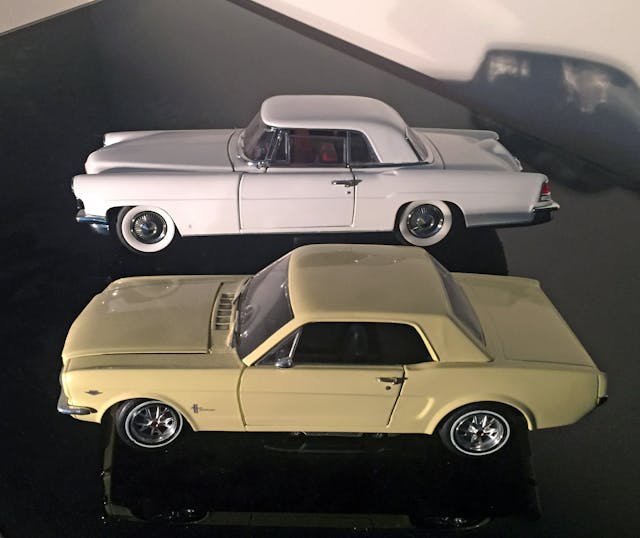
M
Malaise Era: Time period of automobile design from approximately 1973 to 1983, marked by the rudimentary application of computer aided technology, plastic components, and a significant reduction in both emissions and performance. It’s most notable for neoclassic styling trends masking the innovations. The demise of this era began with the wraparound bumpers, wind tunnel influenced styling, and impressive power output of vehicles like the 1982 Ford Mustang GT.
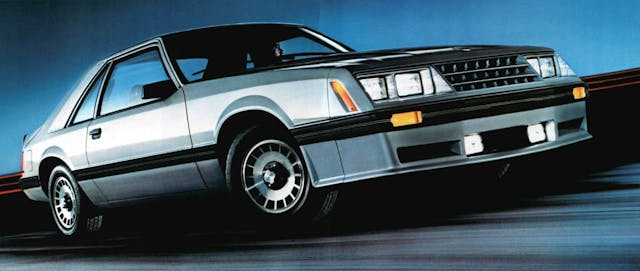
Mid Cycle Refresh: A facelift done to a interior or exterior design closer to the end of a product’s lifecycle (Pontiac Aztek aside), usually constituting little more than new fascias, fenders, hoods, lights and bumpers. Interior changes include new dashboards and seat cover designs, but sometimes more aggressive changes like roof pillars can be implemented.
Minimalism: A style of visual arts traced back to Japanese traditional notions, in which fewer elements make a design more valuable.
Modernism: A style of visual arts from the late 19th century that prioritizes the craftsmanship and style originating from changes found in the Industrial Age.
Moulding: (Also spelled as molding.) A protective or decorative trimming, most commonly seen as flexible strips placed along a vehicle’s sides.
N
NVH: Field of study aimed at reducing a vehicle’s Noise, Vibration, and Harshness characteristics, involving both engineers and designers.
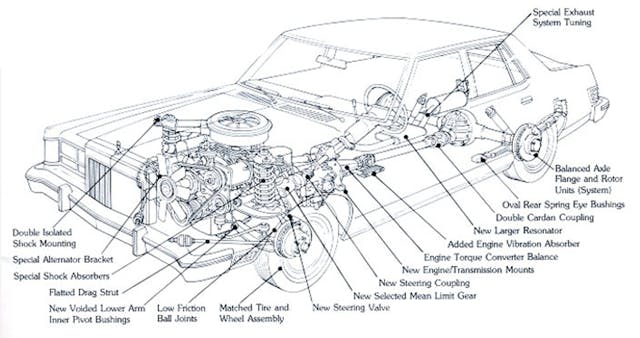
Negative space: The area of a body that’s intentionally left empty. These can be functional (to improve aerodynamics, cooling) or ornamental (to reduce visual weight)
Neoclassic: Styling elements from the pre-WWI era but interpreted for contemporary times. See rococo and Zimmer Motor Cars.
New Edge: Design language from Ford in the mid-1990s, most readily seen in the 1998 Ford Focus.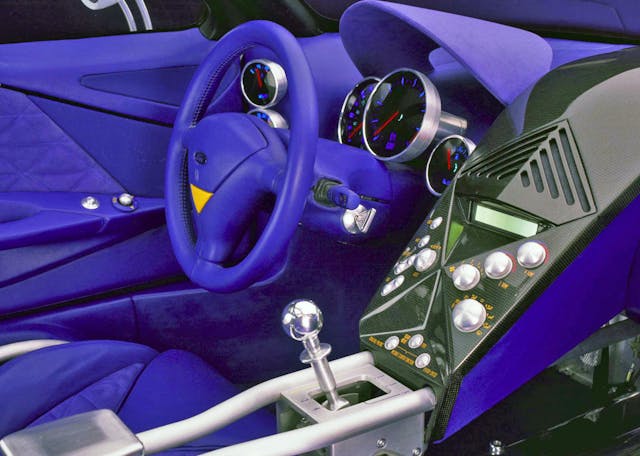
O
One-box design: When viewed from the side, a vehicle that incorporates passengers, cargo, and powertrain spaces within a single box.
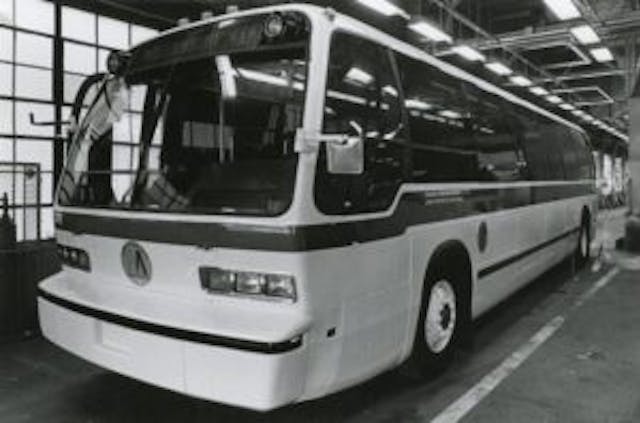
Overhang: The part of the body that resides outside of a vehicle’s wheelbase.
P
Package Tray: The horizontal shelf between the rear seat and the backlight of a sedan or coupe. No longer used to store cargo for occupants, but often holds computer processors and cabin audio systems.
Parking light: See marker light.
Pedestrian-friendly design: Originating from legislation in Europe that mandated a vehicle’s front end is shaped for pedestrian safety, and that hood height is tall enough to provide adequate space between a human body and the engine upon impact.
Perspective: The visualization of a 3-D form on a 2-D surface, with the assumption of a correct representation of all elements in the design.
Pillar: A vertical post that holds the roof above the body of a vehicle.

Portholes: A round opening into which windows or cooling vents are implemented into the body.
Power Bulge: A hood with a prodigious swell (often symmetric, and utilizing the centerline) to give the visual impression of a powerful engine underneath.
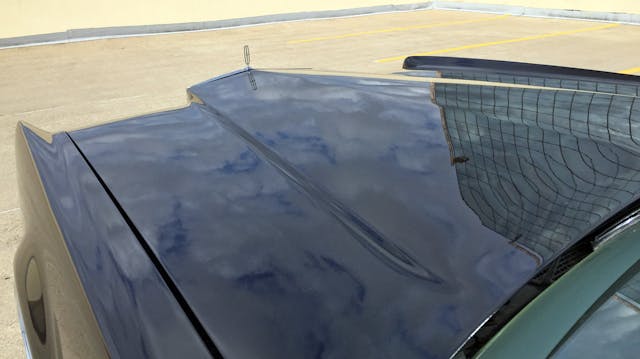
Profile view: The side view of a vehicle.
Projector lens: A headlight assembly design that uses a focusing lens similar to that of the human eye.
Proportions: The interaction between individual styling elements either with the basic shape of a vehicle or amongst other elements in a smaller space. (Think headlight assemblies.) More info here.
Q
Quarter panel: When viewed from the side, the part of that body that fills the gap between the rear doors and the rear bumper.
Quarter window: Glass mounted at the trailing edge of the DLO, either in the C-pillar or in the rear door. Can be functional for cabin ventilation, or fixed to help window mechanisms in rear doors clear the body’s dog leg.
R
Rake: The angle, measured from horizontal, of a design element when viewed from the side, most notably seen in windscreens and A and C pillars.
Reflector lens: Headlight design incorporating a complex reflector behind the light bulb to focus light into a beam.
Rendering: A concept that’s been created in 2D or 3D, most often done in a digital format.
Relief: To design a component with a stamped in stylistic feature (high relief), or carve out to create that design (low relief).
Retro: A historical callback to vehicle design of the past, especially within the same brand as the vehicle in question.
Retrofuturism: A style of visual arts that depicts the future with elements of the past. Designer J. Mays applied this to the VW New Beetle, Audi TT, Ford Thunderbird, and others.

Rococo: Art movement from the late Baroque period, often used as a pejorative for an overstyled element.
Roof Header: see cant rail.
Running Lights: see Daytime Running Lights.
S
Sacco Planks: Horizontally-ribbed side cladding on 1980s Mercedes-Benz cars, named after design chief Bruno Sacco. They were part of his horizontal homogeneity concept, and wildly replicated by Detroit automakers for their European-influenced offerings at the time.

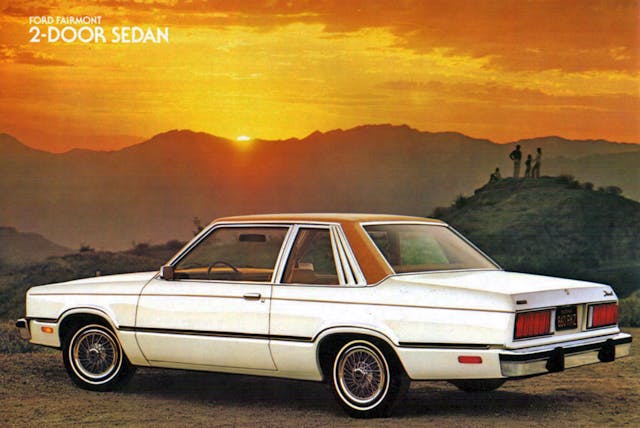
Shoulder line: A curve or bend below the beltline that provides visual separation on par with the way that broad shoulders separate an arm from the body. See 2000 Volvo S60 (below).
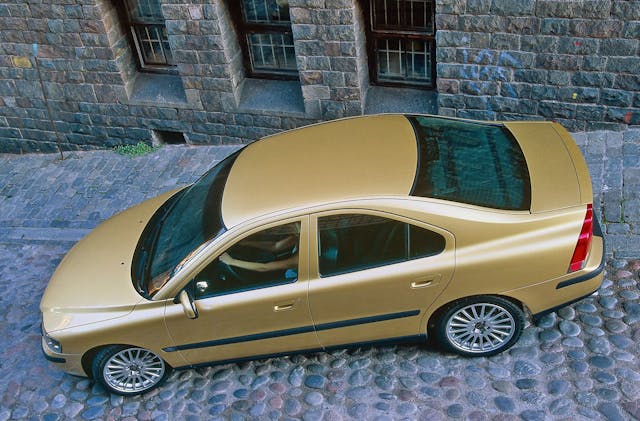
Splitter: A front valance that splits air and pushing the higher pressure air over the car to increase downforce at speed.
Spoiler: A barrier mounted on the rear deck with the purpose of directing air up and away from the car, reducing lift and preventing the turbulence that occurs when high and low pressure air interact behind the car. Not to be confused with a wing.
Strakes: vertical slats mounted to a horizontal panel to route air as desired. See diffuser.
Streamline: The act of lowering the resistance of a design to aerodynamic drag by removing superfluous elements.
Streamline Moderne: A style of visual arts that “streamlined” Art Deco designs to make them more aerodynamic. See the Cord 810/812. Surface tension: taken from nature’s act of allowing a liquid surface at rest to shrink into the minimum surface area possible, like a drop of water that’s perfectly round. The car design application is for sheetmetal that replicates the water droplet’s level of tension in a panel that looks perfectly taut with no slack to give in any direction.Surfacing: The act of contouring a flat piece of sheetmetal for visual or functional enhancement (or both). Popularized by Chris Bangle’s flame surfacing during his tenure at BMW, it’s also a refinement process by virtual (computer assisted design) or physical (clay model) means.
Swage line: See character line.
Symmetry: A mirror image of lines facing each other when comparing the left and the right side of an object relative to its centerline.
T
Tail fin: a mid-century American automotive homage to an airplane’s vertical stabilizer, which provided stability for planes but was ornamental on vehicles of the era (and pioneered by the 1948 Cadillac).
Tea Tray: Front-mounted wing elevated to the point it looks like a serving tray, popularized by the March 711.
Texture: The look and feel of a surface, usually pertaining to unpainted trim on SUVs and off-road vehicles.
Three-box design: When viewed from the side, a vehicle that houses passengers, cargo and the powertrain in individual boxes spaces within a single box. See the Ford Crown Victoria sedan.
Three-quarter view: Vantage point that’s halfway between the profile and the front (or rear) of the vehicle.
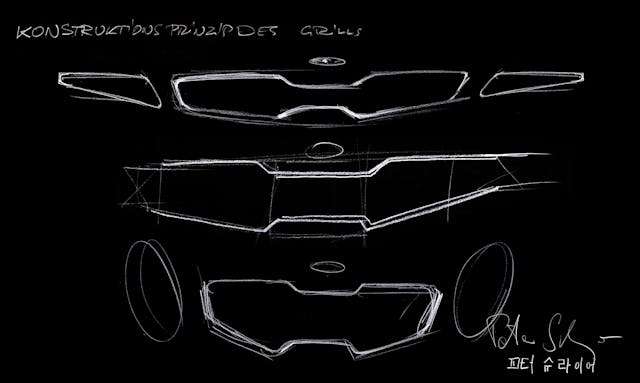
Transportation Design: A field of study within the guidelines of Industrial Design that focuses on the automobile as a single product (not individual components).
Tumblehome: A nautical design term applied to show the inward tapering of a greenhouse from the beltline to the top, when viewed from the front or rear of the vehicle.
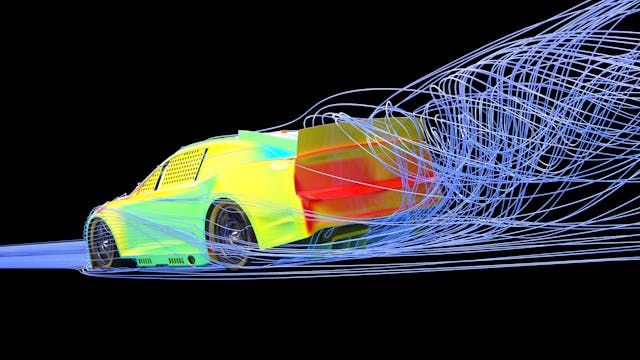
Two-box design: When viewed from the side, a vehicle that incorporates passengers and cargo in a singular box, with the powertrain in another box. See the Range Rover.
U
Underbody: Bottom of the vehicle, whose design is crucial to increasing aerodynamics, lowering NVH, and optimizing packaging guidelines.
Unibody: Chassis type that integrates both the structural frame and the body into a single, unitized, design.
V
Valance: Bumper extension that routes air like an air dam, but generally better integrated into a vehicle’s overall front end design.
Vanishing point: A point out in space where seemingly parallel or unrelated lines on a car would converge, if extended past the body.
Vent window: Moving glass panes attached to the front doors to aid in air circulation inside the cabin. Called Ventipane by General Motors and seen more often on older cars, but modern examples like the 2005 Aston Martin Vantage V8 and the 2013 Ford Fusion are fixed.
Venturi Effect: An increase in speed when air is forced through a smaller space, with the result of lower air pressure for more downforce. See the rear section of the Ford GT.
Visual weight: The force of an element within a vehicle that ultimately catches the viewer’s eye, thus altering the balance of a design. See the deck lid of the Continental Mark IV.
Volumes: The basic shape of a vehicle, the outline of the body work when seen from the side. More info here.
Vortex: Airflow pattern where the air rotates around its centerline.
Vortex generators: Small aerodynamic design feature that creates a vortex, when used in a series can reduce drag on a body panel or wing.
W
Wedge: When looking at the side view, the overall rake of the A-line from front to rear. Most vehicles have a taller rear, making a positive slope to the wedge.
Wedge design: Minimalist styling originating from Italian design studios of the 1970s, featuring literal wedge shapes. See the Lancia Stratos HF Zero.
Whaletail: A long, wide, upturned rear spoiler popularized by the Porsche 911.

Wheel well: The area of the body housing a vehicle’s wheel, often lined with plastic, with or without enhancements like air curtains.
Wheelbase: Measurement of the space between the axles of a vehicle. More info here.
Wing: Often located significantly higher above the deck lid than a spoiler, it deflects air upward to increase downforce. See the McLaren Senna.
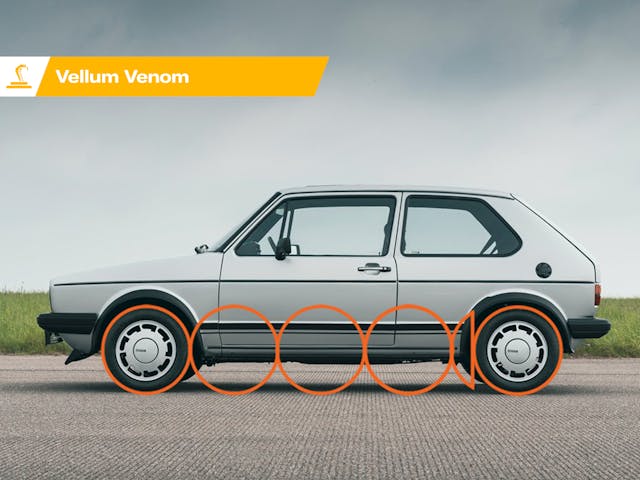






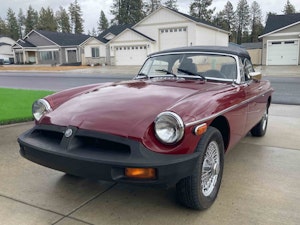
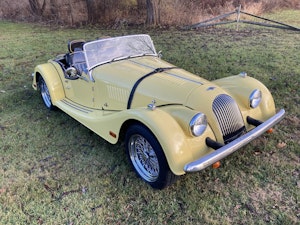
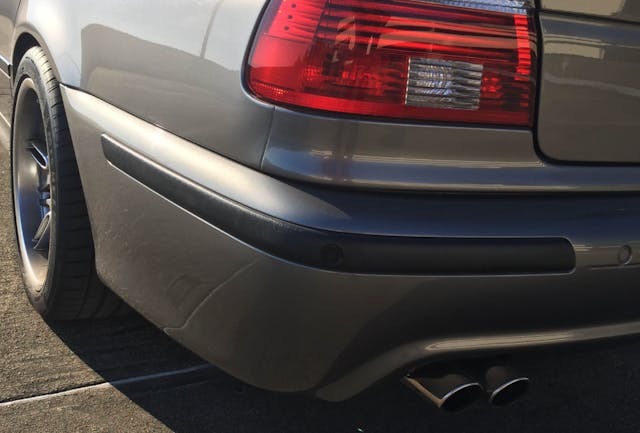


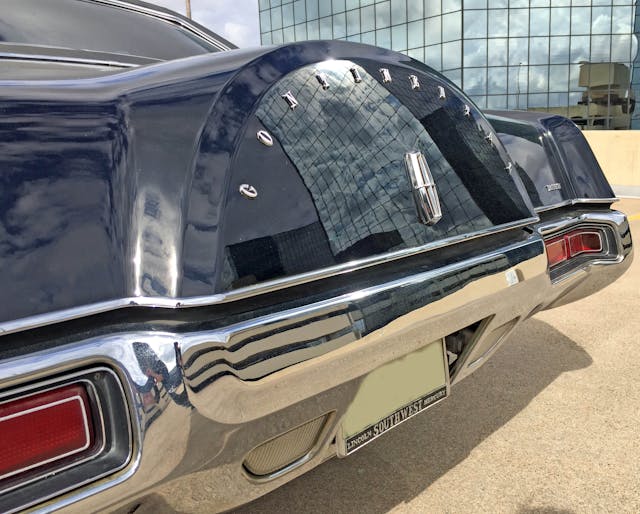
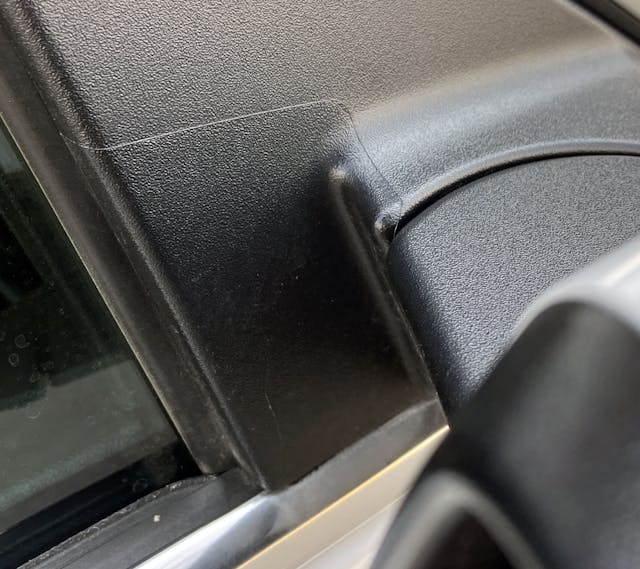

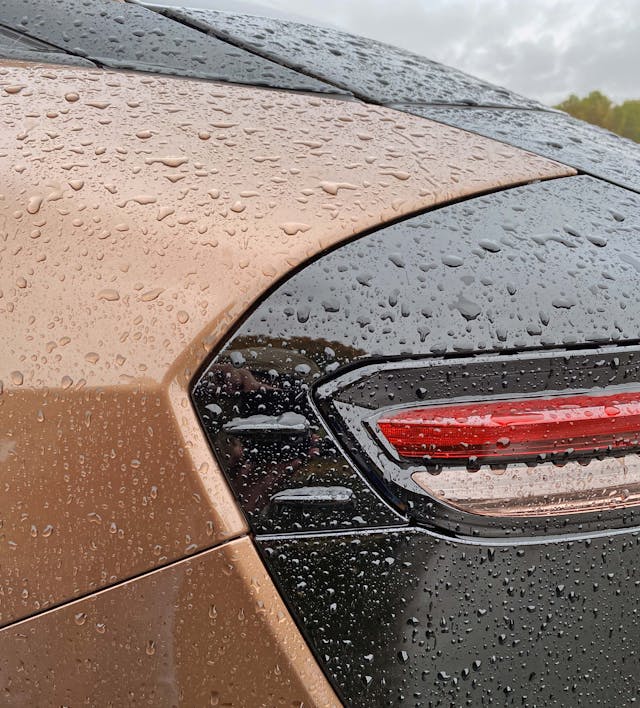

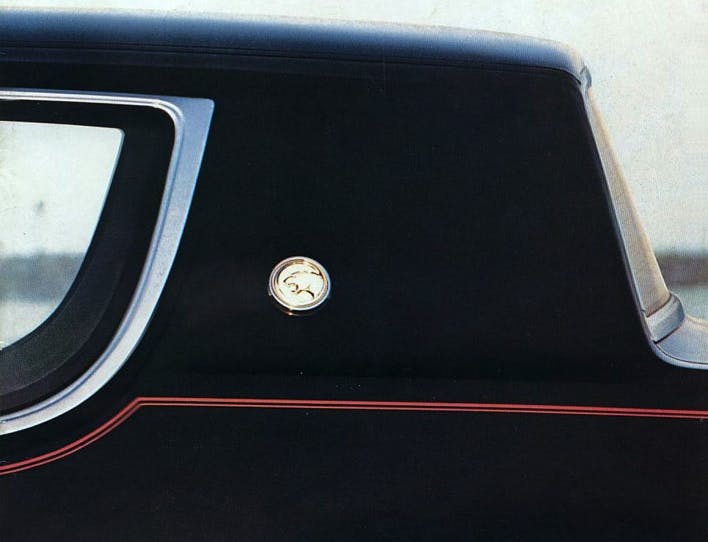
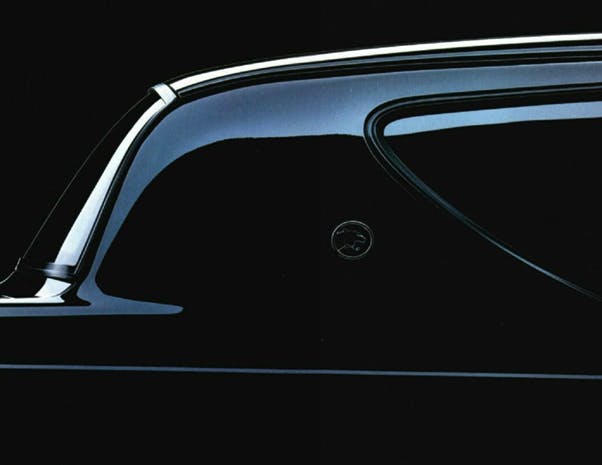
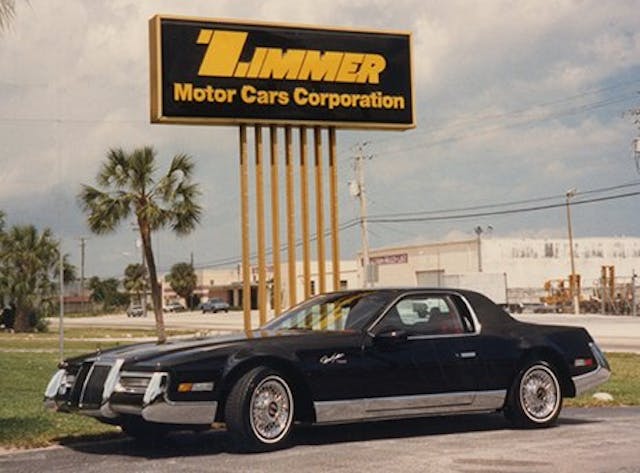

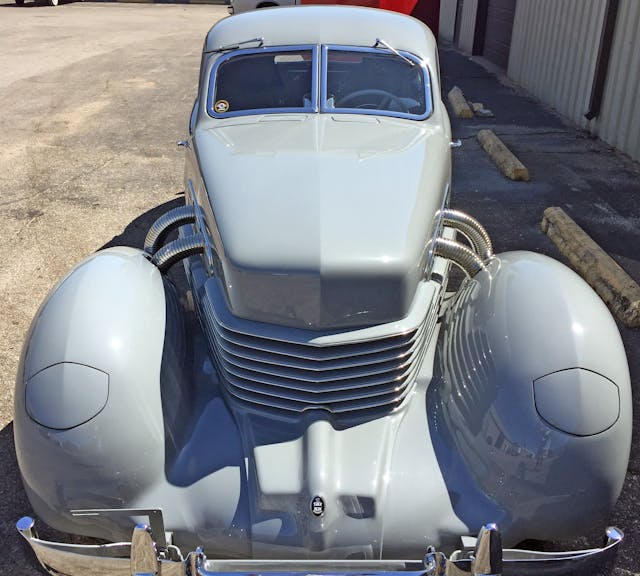

































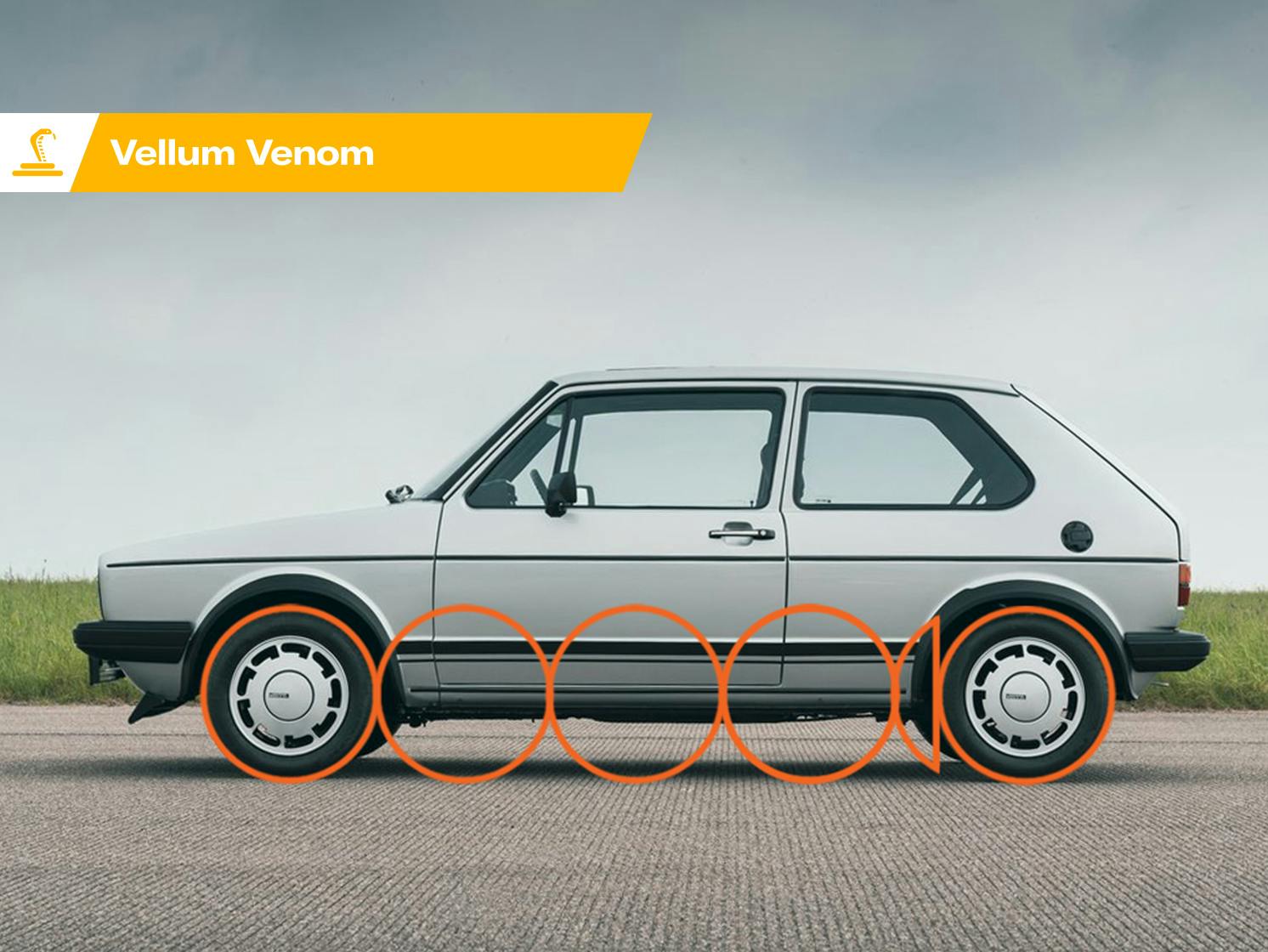
I’m sorry I didn’t see the previous comment that identified “Dutchman” as a shipbuilder’s woodworking term. That’s undoubtably a more historical origin and the architectural cabinetry use is evolved from that. I’m suspicious that the “gap filler” use of this term by cabinet makers more closely fits it’s use in automotive design environments, especially in the “long rectangle” shape, and perhaps in the consequential need for that.
Lots of good stuff here, but why aren’t the terms fully alphabetized? E.g. “Hooper Coachwork” comes way BELOW “Horse Collar”, so out of alphabetical order. Easy to miss something this way.
Oops! That addition is clearly in the wrong place, so I will go through the whole thing again and fix anything else I see.
you forgot “ergonomic”, as in the oldsmobile underachieva
Oh yes, that’s a great one! Adding Ergonomics now!
You have “duck tale” and “whale tale” but “tale” means story; “tail” is what you really want.
Also, mid-’80s 911’s had a flat-ish wing hung off their engine covers that’s refered to as “tea trays”
Thank you, fixing it now!
Author needs to have a dictionary sitting at their desk, or take advantage of the computer equivalent, when doing their writing – shouldn’t it be ‘Whale Tail’ vs. ‘Whale Tale’?
Incorrect. The author needs to stop multitasking when adding/editing his glossary. But you are right, and I am fixing it now.
Actually, ‘Duck Tale(s)’ was a popular Disney cartoon show in the 1990’s, versus the ‘ducktail’ rear spoiler on a Carrera RS. 😉
Oops! How embarrassing!
Also, why is the GTI photo at the head of the article reversed? Seems like someone would have noticed.
Doesn’t the departure angle refer to the angle that a vehicle can be inclined before the arse-end of said vehicle scrapes things/damages bits ie if it’s climbing up a hill or leveling out at the bottom of the hill?
Every definition I see (though I guess I haven’t seen it all) suggests departure angle is about descending a hill. I think they are only used in a vacuum, Approach is for the front and Departure is for the rear.
Shark Fin. Small, triangular, opaque area at the front of the front doors – Above the beltline. Side view mirrors are often attached to this on the outside. Small speakers can sometimes be found here on the inside. When cars still had manual side mirror adjustment the lever protruded through the shark fin into the interior.
Wow I haven’t heard of this one, but it makes sense and I love it. Thank you!
Also… “Surfacing” can also refer specifically to the process of improving/refining a clay or CAD model to a completed state.
Yes that’s very true. I will amend the definition!
Is Cat Throw a term?